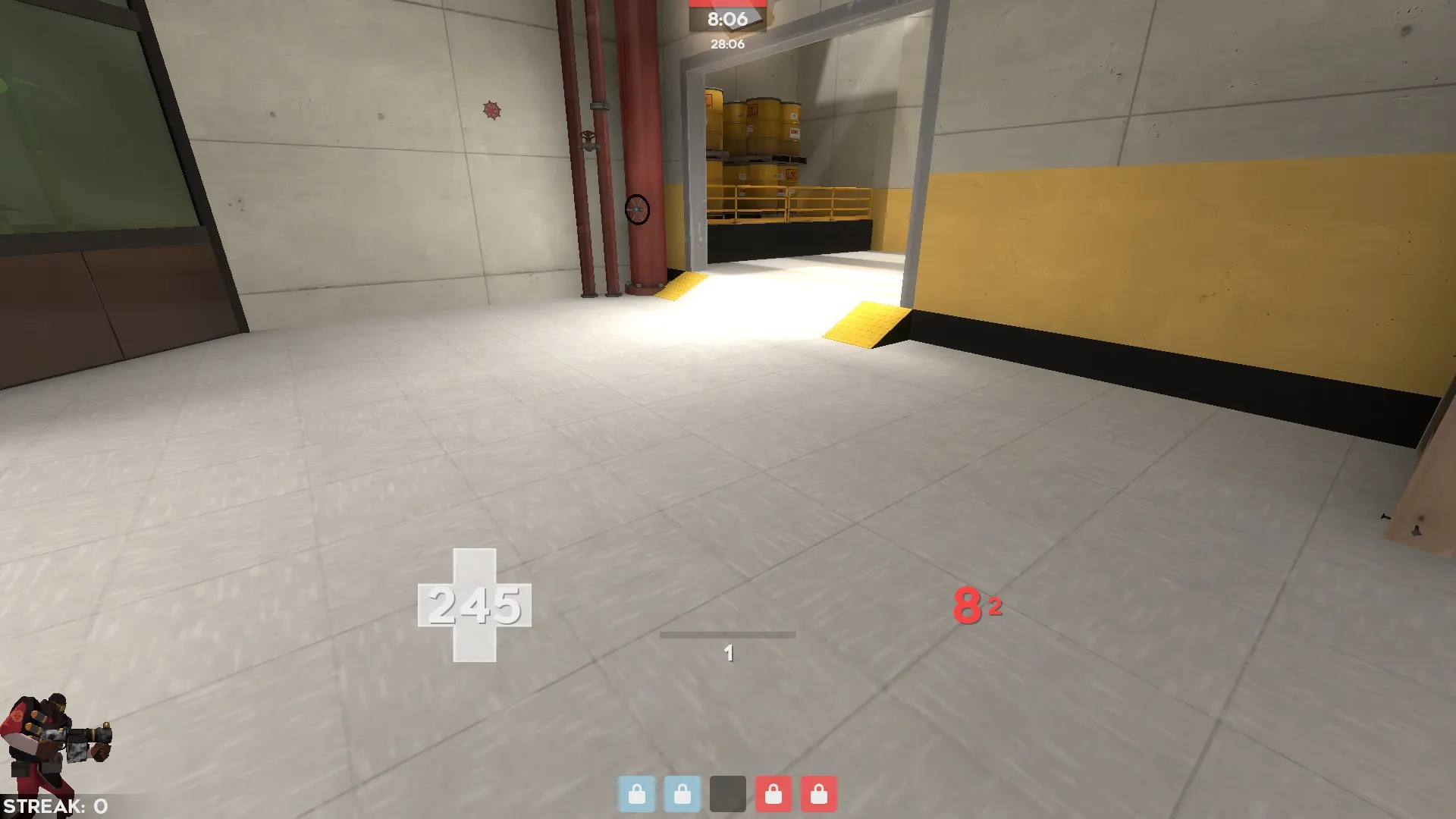Ever wondered what HUD really is and how it impacts our daily lives? Heads-Up Display, or HUD, has become a buzzword in the tech world, and for good reason. It’s not just about cool-looking screens in fighter jets or futuristic cars; HUD technology is revolutionizing how we interact with information. Whether you're a tech enthusiast, a gamer, or simply someone curious about modern advancements, understanding HUD can open up a whole new world of possibilities.
Imagine driving down the highway, and instead of looking down at your dashboard, all the important info—speed, navigation, and even weather updates—appears right in front of you, on your windshield. Sounds like something out of a sci-fi movie, right? Well, it's not. This is HUD in action. It’s all about keeping your eyes where they belong—on the road—while still giving you access to critical data.
Hud isn't just limited to cars, though. It's everywhere, from gaming consoles to aviation. The versatility of this technology is mind-blowing, and as we dive deeper into this article, you'll discover just how impactful HUD can be in different aspects of life. So, buckle up and let's explore the fascinating world of Heads-Up Displays!
- Perdita Weeks Disability A Comprehensive Guide To Understanding Her Journey
- Ullu Web Series Movierulz Your Ultimate Guide To Streaming And Downloading
What Exactly is HUD?
Hud stands for Heads-Up Display, and it’s basically a system that projects important information directly into your line of sight. Think of it as a virtual dashboard that overlays data onto your real-world view. Instead of having to glance down or away to check something, you can keep your focus where it needs to be while still staying informed.
This tech has been around for a while, but it's only recently that it's become more accessible to the general public. Originally developed for military use, HUD has now made its way into consumer products, changing the game in industries like automotive, gaming, and even healthcare.
How Does HUD Work?
The magic behind HUD lies in its ability to project information onto a transparent surface, usually a windshield or a visor. Here's a quick breakdown of how it works:
- All Ullu Web Series A Deep Dive Into The Sensational World Of Edgy Entertainment
- Movierulz Romance Your Ultimate Guide To Streaming Romantic Movies
- Projection System: A small projector sends images or data onto a reflective surface.
- Reflective Surface: This could be your car's windshield, a helmet visor, or even a pair of glasses.
- Eye-Level Display: The information is displayed at eye level, ensuring you don't have to shift your gaze too much.
It's all about making sure the info is clear, concise, and easy to digest without distracting you from your primary task. Whether you're flying a plane, driving a car, or playing a video game, HUD ensures you're always in the loop.
Why is HUD Important?
In today's fast-paced world, staying informed is crucial, but so is staying safe. That's where HUD comes in. By presenting vital information directly in your line of sight, HUD helps reduce distractions and enhances overall safety. Let’s take a look at why this tech is so important:
First off, it minimizes the need to look away from what you're doing. Whether you're navigating through traffic or performing a delicate medical procedure, having key data at your fingertips—literally—can make all the difference. Plus, it reduces cognitive load, meaning you don't have to work as hard to process information.
Key Benefits of HUD
Here are some of the top benefits of using HUD:
- Improved Safety: By keeping your eyes on the road or sky, HUD significantly reduces the chances of accidents.
- Enhanced Efficiency: Quick access to important data means you can make decisions faster and more accurately.
- Increased Productivity: Whether in aviation or gaming, HUD allows users to focus on the task at hand without interruptions.
It’s not just about convenience; it’s about creating a safer, more efficient world. And with advancements in technology, HUD is becoming smarter and more intuitive every day.
Types of HUD Systems
Not all HUD systems are created equal. Depending on the application, there are different types of HUDs designed to meet specific needs. Here’s a breakdown of the most common ones:
Automotive HUD
This is probably the most well-known type of HUD. Modern cars are now equipped with HUD systems that project information like speed, navigation, and even entertainment options onto the windshield. It’s all about making driving safer and more enjoyable.
Aviation HUD
Aviation was one of the first industries to adopt HUD technology. Pilots use HUD to get real-time information about altitude, speed, and weather conditions without having to look down at their instruments. This is crucial for maintaining situational awareness, especially during critical phases of flight.
Gaming HUD
Gamers love HUD because it provides them with essential stats and controls right on their screen. From health bars to weapon stats, HUD in gaming enhances the overall experience by keeping players informed and immersed.
Each type of HUD is tailored to its specific environment, ensuring that users get the most out of the technology.
History of HUD Technology
Hud technology has come a long way since its inception. Originally developed for military use, it has evolved into a versatile tool used across various industries. Let’s take a quick trip down memory lane:
Back in the 1950s, HUD was first introduced in fighter jets to help pilots stay focused during high-speed maneuvers. Over the decades, it has been refined and adapted for civilian use, leading to the advanced systems we see today.
Milestones in HUD Development
- 1950s: First used in military aircraft.
- 1980s: Begins to appear in commercial aviation.
- 2000s: Introduced in consumer vehicles.
- 2020s: Becomes mainstream in gaming and smart devices.
Each milestone represents a significant leap forward in how we interact with information. As technology continues to advance, the possibilities for HUD are virtually limitless.
Applications of HUD in Daily Life
Now that we’ve covered the basics, let’s talk about how HUD is being used in everyday life. From cars to smartphones, HUD is becoming an integral part of our daily routines. Here are some of the most common applications:
In Automotive
Car manufacturers are increasingly incorporating HUD systems into their vehicles. This not only enhances the driving experience but also improves safety by reducing distractions. Imagine never having to take your eyes off the road to check your speed or GPS directions.
In Gaming
Gamers rely on HUD to stay on top of their game. Whether it’s tracking health points or monitoring weapon stats, HUD provides the necessary information at a glance. This makes gaming more immersive and enjoyable.
In Healthcare
Hud is also making waves in the healthcare industry. Surgeons use HUD to access critical patient data during operations, ensuring precision and efficiency. It’s all about saving time and improving outcomes.
The applications are endless, and as more industries adopt HUD technology, we can expect to see even more innovative uses in the future.
Challenges and Limitations of HUD
While HUD offers numerous benefits, it’s not without its challenges. Here are some of the main limitations:
Cost is a significant factor. High-quality HUD systems can be expensive, which may limit their accessibility to the average consumer. Additionally, there’s the issue of calibration. If the HUD isn’t properly aligned, it can cause more harm than good by creating distractions instead of reducing them.
Overcoming Challenges
- Cost Reduction: As technology advances, prices are expected to drop, making HUD more affordable.
- Improved Calibration: Newer systems are easier to set up and maintain, ensuring optimal performance.
Despite these challenges, the potential benefits of HUD far outweigh the drawbacks. As the technology continues to evolve, we can expect to see more affordable and user-friendly options hitting the market.
Future of HUD Technology
So, what does the future hold for HUD? With advancements in AI and augmented reality, the possibilities are endless. Imagine a world where HUD is seamlessly integrated into every aspect of our lives, from smart glasses to contact lenses.
Experts predict that HUD will become even more intuitive, offering personalized experiences tailored to individual needs. Whether it’s helping you navigate through a busy city or assisting with complex tasks, HUD will continue to enhance our ability to interact with the world around us.
Innovations on the Horizon
- Smart Glasses: HUD integrated into wearable tech for everyday use.
- Augmented Reality: Combining real-world views with digital overlays for enhanced experiences.
As we move forward, the line between the physical and digital worlds will continue to blur, thanks in part to innovations in HUD technology.
Conclusion
So there you have it, a comprehensive look at HUD technology and its impact on our lives. From its humble beginnings in military aircraft to its current role in automotive, gaming, and healthcare, HUD has proven to be a game-changer. It’s all about enhancing safety, efficiency, and overall user experience.
As we’ve seen, while there are challenges to overcome, the benefits of HUD far outweigh the drawbacks. And with exciting innovations on the horizon, the future looks brighter than ever. So, the next time you’re cruising down the highway or gaming with friends, take a moment to appreciate the power of HUD.
Now it’s your turn. What do you think about HUD technology? Have you used it before? Share your thoughts in the comments below, and don’t forget to check out our other articles for more tech insights!
Table of Contents
- Odia Viral Video Link What You Need To Know About The Latest Trend
- Ullu Web Series Movierulz Your Ultimate Guide To Streaming And Downloading


